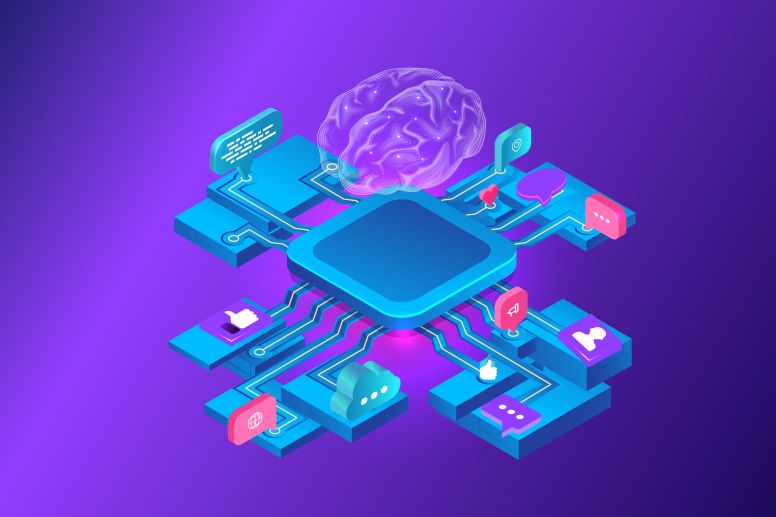Neuroscience in Marketing: Practical Tips

Our thoughts, feelings and actions are simply the results of neural activity in the brain. Marketers widely use insights from neurobiology to guess consumers' desires.
Thanks to neurobiology, it is possible to predict consumers behaviour and even manipulate their decisions. Neuromarketing used to be considered an unconventional approach, but in recent years results of neurobiological researches have become much more popular among marketers. For example, they show that users rely on intuition when it comes to making risky decisions (such as buying from an unreliable online store) and that advertising banners on social networks attract more attention than those on blogs.
According to Marketing Charts, 70% of marketers in 2020 used Facebook for advertising and 41% used Instagram.

Neuromarketing techniques that worth trying out
Loss aversion
For human beings, the pain of loss is stronger than the pleasure of acquisition. Think back to Black Friday: consumers are not only passionate about making a purchase because of big discounts on a product, but the idea that they will miss out on a good deal plays an important role. Amazon uses the same neuromarketing method when it lists products that will soon run out of stock.
Decision paralysis
Consumers have a hard time making purchasing decisions. Paralysis theory explains it this way: when we have a large assortment of products in front of us, the brain actively analyzes them and eventually freezes into inaction for fear of making the wrong choice.
Usually, consumers are provided with a long list of goods, and so they get lost in front of the assortment. If you divide the list into groups that are easier to perceive, the result will surprise you.
A scientific approach to marketing
Let’s turn to statistics. Creative agency Fabrik cites the following data:
- 90% of consumers' purchasing decisions are made subconsciously;
- human brain processes visuals 60,000 times faster than text;
- marketers spend up to 70% of their time attracting the attention of customers.
There are researches proving that advertising with people is more effective than advertising without them. Consider the packaging of Lay’s potato chips or Kinder Chocolate milk chocolate. On the former, you can see celebrities, on the latter — smiling children.
Google, Disney and CBS have already invested in neurobiological marketing. If such «giants» are serious about neuromarketing, it makes sense to follow suit.

We suggest 4 ways to use neuroscience in digital marketing:
1. Effective marketing requires emotions. When your brand evokes a certain emotional response from the audience, people will subconsciously remember you as soon as the right trigger is launched. This is where visual neuroscience can be helpful.
2. Pay attention to prices. Have you ever wondered why the prices of many products are, for example, 299.99 or 399.90 euros, and not 300 or 400? Our brain subconsciously sees such numbers not close to the value, but quite different. The lower the price seems, the better consumers feel about it.
3. Motivate your customers to share their experiences with you. That way you’ll get new customers who already trust the brand thanks to the advice of their friends. Positive reviews will tell consumers more about your product than any commercial advertising.
4. Different people choose different things. It’s convenient to think of consumers as one large community, but different people react differently to the same service or product. Each person chooses what suits better his/her interests and maximizes the benefits. Think about how to capitalize on the preferences, emotions, and moods of different consumers in your marketing strategy.

How to use neurobiology while creating content
You’ll engage with your customers on a deeper level if you take into account the psychological characteristics of your customers when developing your content marketing strategy.
First, look at people’s internal needs. Do you know a single person who doesn’t want to be satisfied and happy? Content that evokes positive emotions has great success.
Second, become an old acquaintance to customers. When we see something familiar and relatable, the brain produces dopamine, causing pleasure. So, use colors, fonts and graphics in your content that remind of you as a pleasant experience.
Third, avoid complexity. Content should be understandable. Anything your brain deems complicated turns into an unpleasant task. Simplify text with subheadings, bullets, and lists. It will end up being easy to read and better digested by the visual part of the brain.
Fourth, surprise the reader. Keep novelty in mind when developing content. Don’t just use the same words and phrases in a new way. Add images to articles and experiment with formats.
According to HubSpot, more than 92% of marketers consider video an important part of their marketing strategy. That’s the highest figures since 2015.

Summary
Neuromarketing has come a long way in the last 15 years. Neurobiological research has proven to be a powerful tool in understanding human behavior. We’ve provided examples of how to operate with visual neurobiology to increase brand recognition and emotion to awaken the brain. Follow the latest research in neurobiological marketing and put it into practice.
You might be interested in:
It is important to know your competitors perfectly. The best way to do this is to conduct competitive analysis.
Read moreHow to build an independent system for collecting and managing customer data for direct and secure communications with customers in the digital environment.
Read moreIn this piece we are getting into the reasons why insurance companies need marketing automation and share five effective strategies of automation in this business field.
Read more
